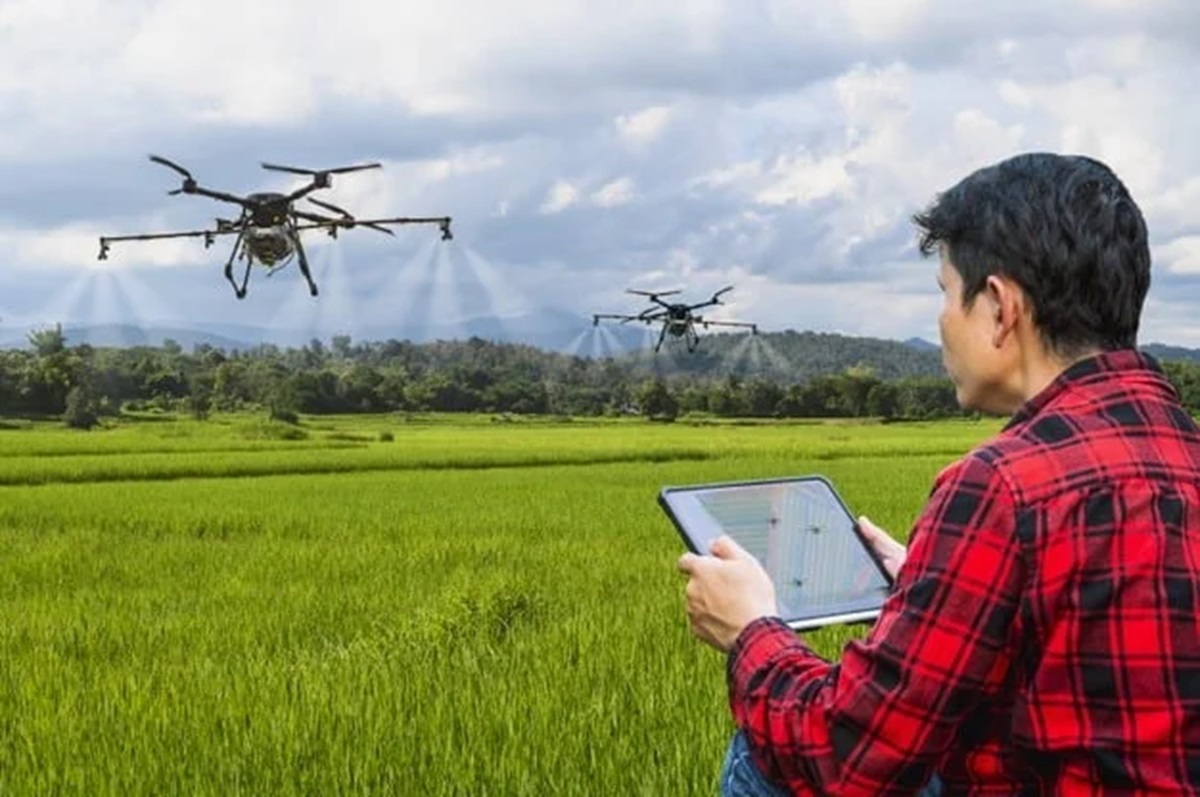Smart Farming in Cambodia: How Green Tech is Transforming Agriculture

Agriculture has long been the backbone of Cambodia’s economy, employing nearly one-third of the country’s workforce and contributing significantly to GDP. However, the sector faces growing challenges, including climate change, soil degradation, water scarcity, and outdated farming methods. To combat these issues and increase productivity while preserving natural resources, Cambodia is embracing smart farming technologies.
Smart farming, powered by green technology and digital innovations, is revolutionizing how Cambodian farmers grow crops, manage livestock, and utilize resources. This article explores the key technologies driving this transformation, their benefits, challenges, and the future of smart farming in Cambodia.
What is smart farming?
Smart farming refers to the use of technology-driven solutions to optimize agricultural practices. It incorporates tools such as IoT (Internet of Things), AI (Artificial Intelligence), drones, big data, and automation to enhance efficiency and sustainability.
Key Components of Smart Farming:
- Precision Agriculture—Uses data-driven insights to improve crop yields and resource efficiency.
- IoT & Sensors—Monitors soil moisture, temperature, and nutrient levels.
- Automated Irrigation—Smart water management reduces waste.
- Vertical & Hydroponic Farming—Uses minimal soil and water while maximizing space.
- Renewable Energy Integration—Solar-powered irrigation and biogas reduce carbon footprints.
Smart farming not only enhances crop quality and yield but also helps reduce environmental impact by minimizing the overuse of water, pesticides, and fertilizers.
Key Smart Farming Technologies in Cambodia
1. Precision Farming with Drones & GPS
Drones equipped with multispectral cameras provide detailed aerial images, helping farmers detect crop health issues, pest infestations, and irrigation needs. GPS-guided machinery ensures efficient seed planting and fertilizer application.
2. IoT & Smart Sensors for Real-Time Monitoring
IoT sensors collect real-time data on soil moisture, humidity, and temperature, allowing farmers to adjust irrigation and fertilization accordingly. This leads to better crop growth while conserving resources.
3. Hydroponics & Vertical Farming
In urban areas like Phnom Penh, hydroponic farms are gaining popularity. These farms grow crops without soil, using nutrient-rich water solutions. Vertical farming maximizes limited space and requires 90% less water than traditional farming.
4. Solar-Powered Irrigation & Biogas Technology
Many Cambodian farmers now use solar pumps for irrigation, reducing reliance on costly and polluting diesel generators. Additionally, biogas systems convert farm waste into clean energy, providing sustainable fuel for rural households.
Benefits of Smart Farming for Cambodia
1. Increased Crop Yields 🌾
Smart farming enables farmers to produce more food with fewer resources. AI-powered predictions help optimize planting schedules, while sensors detect soil deficiencies, leading to healthier and higher-yielding crops.
2. Sustainability & Resource Conservation 🌱
- Smart irrigation reduces water waste.
- Precision farming minimizes pesticide and fertilizer use, reducing environmental pollution.
- Renewable energy solutions lower carbon emissions.
3. Climate Resilience ☀️
AI-driven analytics help predict droughts, floods, and pest outbreaks, allowing farmers to take preventive measures. This is crucial as Cambodia faces rising temperatures and irregular rainfall patterns due to climate change.
4. Economic Growth & Profitability 💰
- Lower input costs (water, fertilizers, and labor) increase profit margins.
- Tech-driven efficiency attracts investment and agribusiness opportunities.
- Farmers can access new markets through digital agriculture platforms.
Challenges in Implementing Smart Farming
1. High Initial Costs
The cost of drones, IoT devices, and automation systems can be expensive, making it difficult for small-scale farmers to afford these technologies without financial assistance.
2. Limited Digital Literacy
Many farmers in Cambodia, especially in rural areas, lack the technical knowledge to operate smart farming tools effectively. Training programs are essential to bridge this gap.
3. Infrastructure & Connectivity Issues
Smart farming relies on stable internet and mobile networks for real-time data transmission. However, Cambodia’s rural internet coverage remains weak, hindering digital agriculture adoption.
4. Policy & Government Support
Although the government has shown interest in agritech, there is a need for stronger policies, subsidies, and investment initiatives to make smart farming accessible to all farmers.
Opportunities & Future Outlook
Despite the challenges, the future of smart farming in Cambodia looks promising. Several factors contribute to its growth:
- Government Incentives & Agritech Investments
- The Cambodian government is partnering with private companies to develop agritech initiatives.
- Tax incentives for green agriculture technologies.
- Rise of Agritech Startups 🚀
- Startups are offering affordable, localized smart farming solutions.
- Examples include companies specializing in AI-powered crop monitoring and automated irrigation.
- International Collaborations 🌍
- Cambodia is working with China, Japan, and the EU to enhance agritech infrastructure.
- Funding from organizations like the Asian Development Bank (ADB) and UNDP supports green agriculture.
- Farmer Training & Digital Education 📚
- Workshops and mobile apps help farmers learn digital farming techniques.
- Agritech firms are offering hands-on training for smart farming adoption.
Case Studies & Real-World Examples
1. Solar-Powered Irrigation in Battambang
In Battambang province, farmers are using solar-powered water pumps to irrigate their rice fields. This reduces fuel costs by 40% while ensuring a consistent water supply during dry seasons.
2. IoT-Based Precision Farming in Siem Reap
A pilot project in Siem Reap installed IoT sensors in vegetable farms to monitor soil health. Farmers received real-time alerts via a mobile app, leading to a 20% increase in crop yield.
3. Hydroponic Farming in Phnom Penh
A startup in Phnom Penh operates a large-scale hydroponic farm, producing pesticide-free lettuce and herbs. The farm supplies local restaurants and supermarkets, proving the viability of urban smart farming.
Conclusion: The Future of Cambodian Agriculture is Smart
Smart farming presents an exciting opportunity for Cambodia to modernize its agriculture, boost food production, and promote sustainability. By leveraging agritech innovations, farmers can overcome traditional challenges and thrive in a competitive, climate-sensitive world.
However, government support, affordable technology, and farmer education are critical to making smart farming accessible to all. With continued investment and innovation, Cambodia can position itself as a leader in green agriculture in Southeast Asia.
What’s Your Take? 💬
Are you a farmer, investor, or tech enthusiast interested in smart farming? Share your thoughts and experiences in the comments below! 🚜🌱



